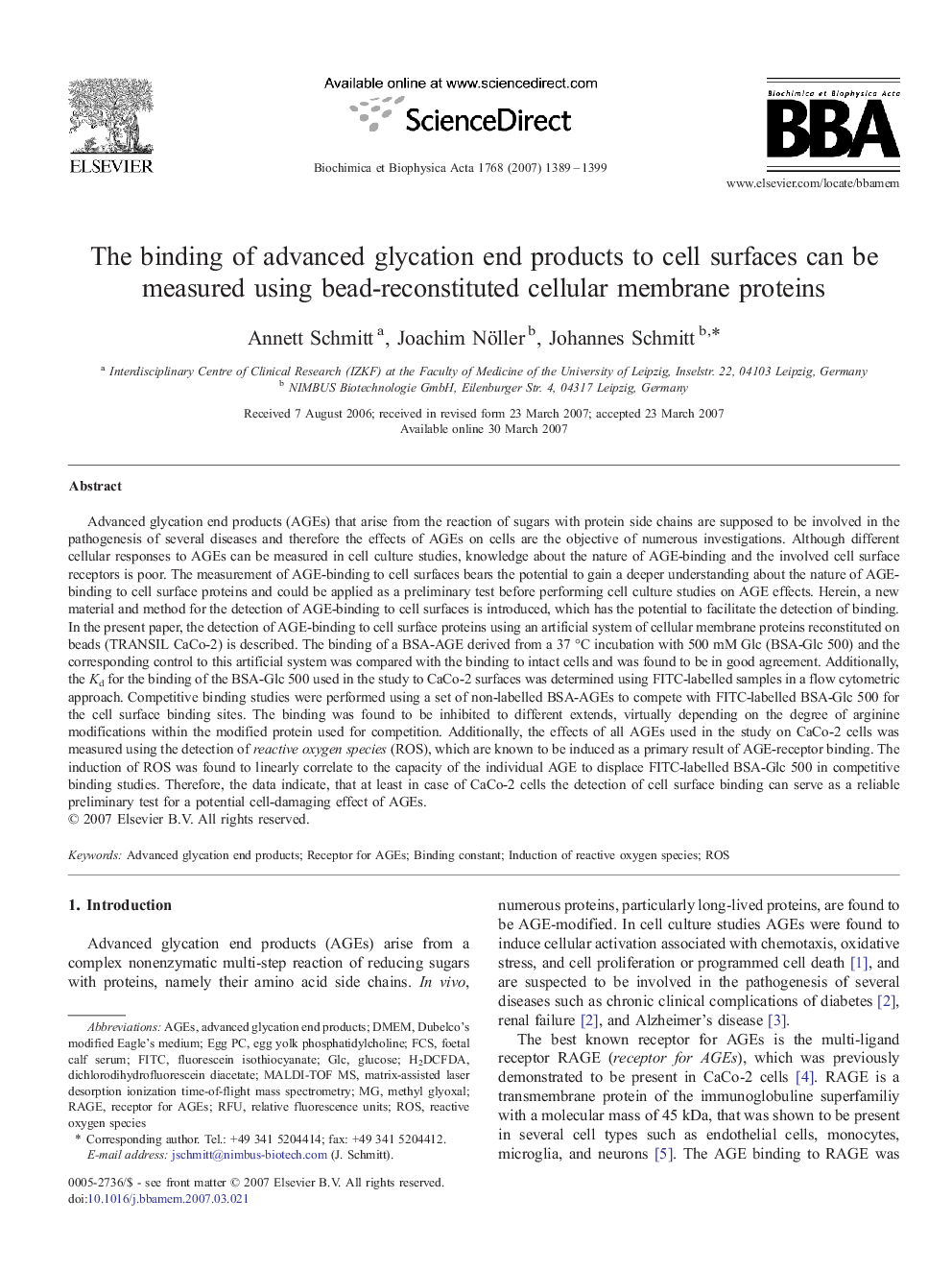| کد مقاله | کد نشریه | سال انتشار | مقاله انگلیسی | نسخه تمام متن |
|---|---|---|---|---|
| 1945885 | 1053279 | 2007 | 11 صفحه PDF | دانلود رایگان |

Advanced glycation end products (AGEs) that arise from the reaction of sugars with protein side chains are supposed to be involved in the pathogenesis of several diseases and therefore the effects of AGEs on cells are the objective of numerous investigations. Although different cellular responses to AGEs can be measured in cell culture studies, knowledge about the nature of AGE-binding and the involved cell surface receptors is poor. The measurement of AGE-binding to cell surfaces bears the potential to gain a deeper understanding about the nature of AGE-binding to cell surface proteins and could be applied as a preliminary test before performing cell culture studies on AGE effects. Herein, a new material and method for the detection of AGE-binding to cell surfaces is introduced, which has the potential to facilitate the detection of binding. In the present paper, the detection of AGE-binding to cell surface proteins using an artificial system of cellular membrane proteins reconstituted on beads (TRANSIL CaCo-2) is described. The binding of a BSA-AGE derived from a 37 °C incubation with 500 mM Glc (BSA-Glc 500) and the corresponding control to this artificial system was compared with the binding to intact cells and was found to be in good agreement. Additionally, the Kd for the binding of the BSA-Glc 500 used in the study to CaCo-2 surfaces was determined using FITC-labelled samples in a flow cytometric approach. Competitive binding studies were performed using a set of non-labelled BSA-AGEs to compete with FITC-labelled BSA-Glc 500 for the cell surface binding sites. The binding was found to be inhibited to different extends, virtually depending on the degree of arginine modifications within the modified protein used for competition. Additionally, the effects of all AGEs used in the study on CaCo-2 cells was measured using the detection of reactive oxygen species (ROS), which are known to be induced as a primary result of AGE-receptor binding. The induction of ROS was found to linearly correlate to the capacity of the individual AGE to displace FITC-labelled BSA-Glc 500 in competitive binding studies. Therefore, the data indicate, that at least in case of CaCo-2 cells the detection of cell surface binding can serve as a reliable preliminary test for a potential cell-damaging effect of AGEs.
Journal: Biochimica et Biophysica Acta (BBA) - Biomembranes - Volume 1768, Issue 6, June 2007, Pages 1389–1399